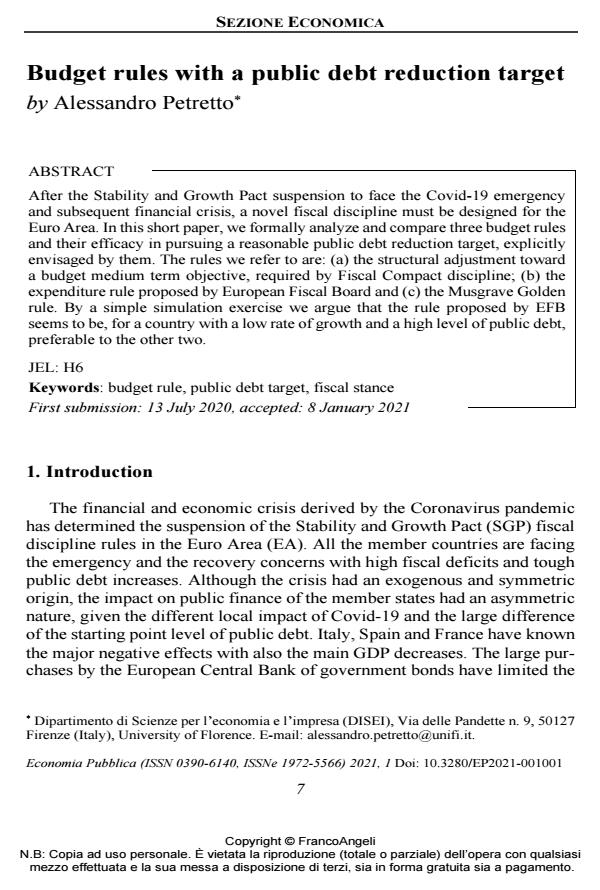Budget rules with a public debt reduction target
Titolo Rivista ECONOMIA PUBBLICA
Autori/Curatori Alessandro Petretto
Anno di pubblicazione 2021 Fascicolo 2021/1
Lingua Inglese Numero pagine 18 P. 7-24 Dimensione file 148 KB
DOI 10.3280/EP2021-001001
Il DOI è il codice a barre della proprietà intellettuale: per saperne di più
clicca qui
Qui sotto puoi vedere in anteprima la prima pagina di questo articolo.
Se questo articolo ti interessa, lo puoi acquistare (e scaricare in formato pdf) seguendo le facili indicazioni per acquistare il download credit. Acquista Download Credits per scaricare questo Articolo in formato PDF

FrancoAngeli è membro della Publishers International Linking Association, Inc (PILA)associazione indipendente e non profit per facilitare (attraverso i servizi tecnologici implementati da CrossRef.org) l’accesso degli studiosi ai contenuti digitali nelle pubblicazioni professionali e scientifiche
After the Stability and Growth Pact suspension to face the Covid-19 emergency and subsequent financial crisis, a novel fiscal discipline must be designed for the Euro Area. In this short paper, we formally analyze and compare three budget rules and their efficacy in pursuing a reasonable public debt reduction target, explicitly envisaged by them. The rules we refer to are: (a) the structural adjustment toward a budget medium term objective, required by Fiscal Compact discipline; (b) the expenditure rule proposed by European Fiscal Board and (c) the Musgrave Golden rule. By a simple simulation exercise we argue that the rule proposed by EFB seems to be, for a country with a low rate of growth and a high level of public debt, preferable to the other two.
Parole chiave:Budget rule, public debt target, fiscal stance
Jel codes:H6
Alessandro Petretto, Budget rules with a public debt reduction target in "ECONOMIA PUBBLICA " 1/2021, pp 7-24, DOI: 10.3280/EP2021-001001